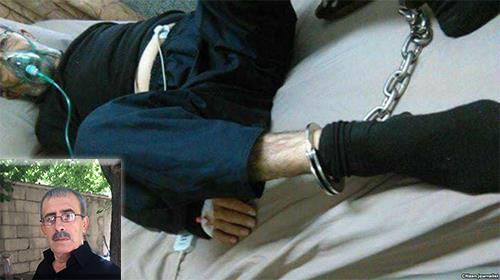Iran’s 2018 protests indicate change in 2019
On December 28, 2017, the massive demonstrations that rocked Mashhad, quickly spread from the north east province of Khorasan to 142 cities in Iran.
The demonstration, initially in protest to high prices, quickly changed course in as little as 24 hours with protesters directly targeting the whole Iranian regime in its entirety.
Angry protesters all over Iran chanted against the leader of the Islamic Republic, Ali Khamenei and its president, Rouhani, demanding regime change.
Despite the ensuing waves of suppression and the arrest of activists and protesters and the increased number of the execution of prisoners, the protests continued the whole year round indicating that the regime had failed to contain the fury of Iranians.
Contrary to 2017, when only a few cities witnessed protests, it is now difficult to find a city in Iran that has not erupted in protests this year. Various sectors of Iran’s society including workers, teachers, students, bazaar merchants, truck drivers, pensioners, employees and depositors who lost their deposits to government affiliated credit institutions, rallied on an almost daily basis in 2018.
Although their demands vary by their sector, they all agreed that the regime was incompetent in meeting their minimum economic needs and that corruption, embezzlement and looting was intertwined with the government. Disenchanted Iranians have lost all hope, no longer trust the system and believe that the regime must go.



Economic woes turn to major rallies
The social and economic protests held by different sectors of the society are held on the basis of specific demands that require a specific response and certain measures by relevant government institutions.
Overall, they are protesting months of unpaid salaries, the privatization of factories that were once public, their stolen credit, lack of urban infrastructure, water scarcity, rising exchange rates, high inflation, unemployment, and the arrest of activists and protesters.
But the situation in Iran has changed and the Iranian regime has no answer to the problems in the social and economic arena.
Iran can no longer fix the currency which has lost 70 percent of its value.
As a result, the regime is at best trying to silence protesters by making promises that it does not have the power to keep.
2018 has shown that the people’s only response to the corruption, looting, embezzlement and the inefficiency of the regime in dealing with these issues is regime change.
Iranian officials concerned over future developments
In an unprecedented statement on December 12, Khamenei expressed his fear of escalating popular protests and said in comments carried by the Tasnim state-run News Agency that the US was planning to “create dispute, and civil war with the help of sanctions and counter security measures” and wanted “to drag people on the streets” to protest in Iran.
The Islamic Republic’s Supreme Leader cited both the MEK and the US as enemies of the regime adding that they could “create tumult in 2018, but have schemes for 2019.”
Why is Khamenei so frightened and concerned about next year and the regime’s internal crises?
The concerns stem from the fact that 2018 was marked with widespread protests, strikes, and rallies in all Iranians cities against the regime.
As always, Khamenei is attempting to link the protests to his presumed enemy, the United States, in an effort to erase the real problem and the regime’s real enemy, the people of Iran.
Last August, Rouhani admitted during a speech that the regime’s internal and international problems had skyrocketed since the December/January uprising.
“The sedition … gave a message to foreigners that by exerting pressure, they could have a greater impact,” he said.
Rouhani was right in his discovery that the regime’s plethora of domestic and international dilemmas stemmed from the January uprising, with the regime’s utter instability being exposed.
Iran’s failed options
Although the confrontation between the majority of Iranians and the regime has been ongoing for the past 39 years, President Trump’s arrival at the White House and the withdrawal from the nuclear deal has led to heightening tensions.
The policy of appeasement, which was one of the only reasons that the regime was able to survive so long, ended with Obama’s departure, which saw the commencement of strong sanctions against Iran.
Since that time, the Iranian regime has tried in vain to evade sanctions with the help of European governments.
Iran’s policy of clinging to the East and turning to Russia and China was also ineffective with China recently withdrawing from Iran’s South Pars gas fields.
The regime is out of options as all the paths ahead are suicidal.
But that does not stop it from turning to its only natural course of action; Terrorism abroad, missile tests and domestic suppression.
In comments carried by Iranian media, a pro-Rouhani political expert recently cited the new waves of protests and warned that the regime would fall.
“There is something happening. The voice of the unity of the protests can be heard. If serious economic decisions are not made, there will be very difficult consequences,” Fayaz Zahed said.
“I am telling you that these waves will unite and will lead to thunderous demands,” he added.
“Due to inefficiencies in terms of the economy and international pressure, the political system will witness two things; it will either collapse from within or it will bow down to external pressure,” the reformist political expert said.
Undeniably, the force that will bring the system to its knees will be the massive wave of popular protests and the organized uprising of the Iranian people.
Iran’s protests have become more widespread, unified and have reached new depths as protesters’ intend to bring down the regime.




Comments
Post a Comment